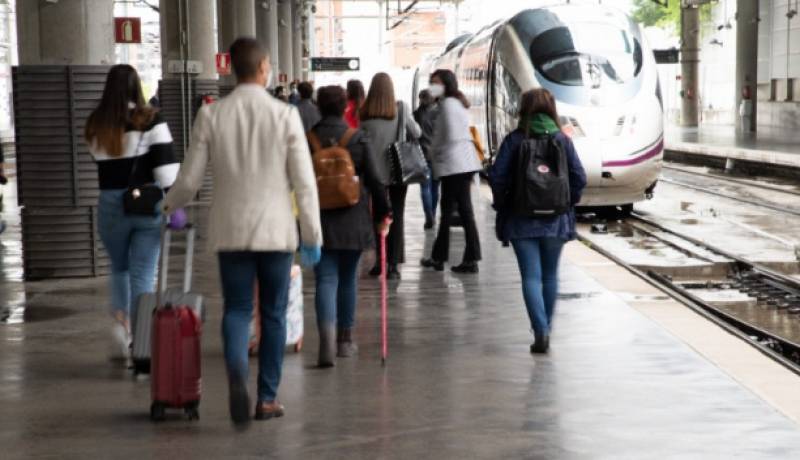- Region
- Vega baja
- Marina Alta
- Marina Baixa
- Alicante
- Baix Vinalopo
- Alto & Mitja Vinalopo
-
ALL TOWNS
- ALICANTE TOWNS
- Albatera
- Alfaz Del Pi
- Alicante City
- Alcoy
- Almoradi
- Benitatxell
- Bigastro
- Benferri
- Benidorm
- Calosa de Segura
- Calpe
- Catral
- Costa Blanca
- Cox
- Daya Vieja
- Denia
- Elche
- Elda
- Granja de Rocamora
- Guardamar del Segura
- Jacarilla
- Los Montesinos
- Orihuela
- Pedreguer
- Pilar de Horadada
- Playa Flamenca
- Quesada
- Rafal
- Redovan
- Rojales
- San Isidro
- Torrevieja
- Comunidad Valenciana
ARCHIVED - Orcas continue to attack boats on the Galician coastline
On Monday there were three further instances in which boats had to be towed in to port with damaged rudders

Image still: From video posted by Halcyon Yachts: International Yacht Delivery which was rammed by the orcas
The Galician coastline is renowned for its rich fishing grounds and marine life, shoals of migratory fish moving along its coast attracting hungry predators, a natural cycle which is repeated year after year, normally without attracting much in the way of media attention as shoals of tuna transit the Atlantic coast, pursued by orcas.
Every year the pattern of sightings varies considerably, and sightings are more frequent some years than others, depending very much on the movement of the shoals of fish and the weather; if the fish move towards the coast, the orcas follow; if the weather is good pleasure fishermen are out in search of tuna, and the chances of sightings are greater.
The fish move along this coastline twice a year, northwards in the autumn and towards the south in the spring, although sightings are generally fewer in the spring. It’s been reported by the Galician local media that sightings have been fewer since 2015, although this year tourists have been treated to a multitude of whale sightings along the coast.
But this year the media is enjoying something of a feeding frenzy of its own, following a series of attacks on the rudders of vessels by orcas, better known as killer whales.
The first episode occurred at the end of August and since then there have been at least five incidences, the last occurring on Monday.
The first known case in August, involved a French sailboat named Daito that was damaged slightly near to Ons, while sailing towards Baiona.
After this it was the turn of the Mirfak, a Navy ship, which filmed an attack during which the vessel was rammed and the rudder ripped off while sailing near Corrubedo. On Saturday, the Beautiful Dreamer, a British sailboat had to be towed to port after again losing control when its rudder was attacked near to Cape Prior, Ferrol.
Then on Monday three recreational fishing boat boats, the Amadeus, the Urki 1 and the Aliana, also had to be towed to port after three attacks on rudders in the same area, and within a short time of each other, near to Cedeira, in La Coruña.
The two French crew members of the sailboat 'Amadeus' radioed the coastguard shortly after 00:10 in the morning after losing control of their rudder about 7 nautical miles southwest of the town of Cedeira. The sailboat 'Urki I' called in at 03:05, while sailing about 4 miles northwest of Cedeira, that it had also suffered a rudder break and loss of steering. The two crew members, who remained inside, were completing a voyage between Fisterra (A Coruña) and Gijón and also requested that their ship be towed.
pp
The Ministry for Ecological Transition, which is "studying incidents in contact with experts in the area and analyzing possible actions to be taken in the coming days," has reportedly asked the International Whaling Commission if there is any history of this type of incidents and experts from the Centre for the Study of Marine Mammals (Cemma) have declined to make any further comments to the media after analysing the behaviour of what is believed to be one group of juvenile orcas on the journey north.
At the end of August, Salvamento Marítimo issued a radio warning in the Rías Baixas after the first attacks and advised that "in case of sighting" of orcas "vessels should not try to approach", but give them a "wide berth" and maintain a "sufficient safety distance". In fact, a royal decree of 2007 defines a safety distance of 60 meters as mandatory. Biologists also recommend that boats encountering orcas should slow down or stop altogether, as the motion of the vessel and rudder attracts the attention of the orcas.
Attacks on boats are rare, although they do occur from time to time and one incident was reported in the Pacific rcently in which an orca leapt into the air and landed on the deck of a British sailboat, causing it to sink. Orcas regularly grow up to nine metres in length and weigh several tons, so when they decided to ram a boat or “play with a rudder” they can easily disable a vessel, which is what seems to be happening in these instances.
It cannot be ruled out that all of the incidents relate to the same group of four or five killer whales, "says marine biologist Bruno Díaz, director of the Bottlenose Dolphin Research Institute (BDRI), in O Grove in an interview. “What makes this series of incidents unique is the fact that they have interacted and caused damage to the rudders. It may be because it is a group with one or more juveniles that tries to play with the rudder, which is the outer part of the ship that moves and the one that draws the attention of an animal that swims in parallel or in a slipstream ”.
It has been mooted that perhaps the recent spell of good weather could be bringing more pleasure boats out into the waters at the same time as the shoals of tuna are passing through. Should the tuna move in closer to the coast, then the orcas follow and as sporting fishermen are also out hunting for the tuna, the groups are co-inciding.
However, Bruno Díaz insists: “The only exceptional thing is that this year the orcas are encountering and interacting with the yachts, because there have always been orcas here at this time of the year".

























